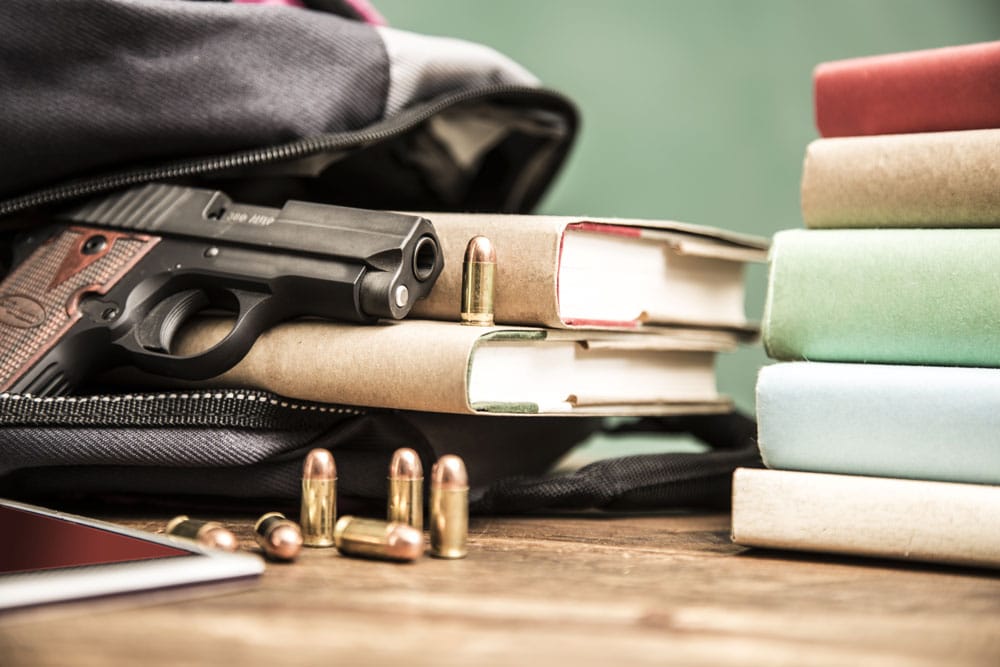According to one study recently conducted by the experts at DoSomething.org, 20% of high school students in particular reported that they were bullied at least once at school during the 2011 school year. Likewise, it was revealed that a full 6% of high schoolers stayed home during the course of a single month because they reported that they felt unsafe, either at school or on there way there. School threat assessment teams may be one solution.
A number of other studies help to underline the fact that school safety is an issue that must be addressed at all costs moving forward. The National Center for Education Statistics, for example, revealed that between July 1, 2014 and June 30, 2015, there were a total of 47 violent deaths on school property in the United States. This number further breaks down to:
- 28 homicides.
- 17 suicides.
- 2 legal intervention deaths.
To put this into a little bit of critical perspective, the NCES also revealed that between 1992 and 2016, the total victimization rates for students between the ages of 12 and 18 actually declined – both at school and while away. Many different types of school crime decreased during this period, in fact, including but not limited to thefts, violent victimization, serious violent victimization and more.
While all of this may sound like good news – and, from a certain perspective, it is – it also ignores a larger phenomenon that has sadly grown in prevalence over the last few years: school shootings. School Threat Assessment Teams are one way to address this challenge.
School Safety: Facts and Figures
In a study conducted by CNN that took a look at the time period from January 1, 2009 to May 21, 2018, it was revealed that there were 288 school shootings in the United States in a little under a decade. This is one statistic that the U.S., unfortunately, leads the world in – a trend that shows no signs of reversing itself anytime soon. Mexico had eight school shooting incidents during the same period of time, to come in at number two on the list. South Africa, India, and Pakistan had six, five and four such incidents, respectively.
All of this data helps to highlight two key trends that are certainly somewhat at odds with one another. While it may seem that schools are becoming safer in general, school shootings are also on the rise.
This also helps to illustrate the importance of reports like the Secret Service National Threat Assessment Center’s recent “Enhancing School Safety Using a Threat Assessment Model.”
That report aims to provide guidance for both schools and communities to help identify students of concern, assess their risk level for engaging in violence and identify intervention strategies to help mitigate that risk as much as possible.
The Secret Service’s Report: What You Need to Know
The Secret Service originally created the National Threat Assessment Center in 1998 with the intention of providing resources to assist in research, training and threat assessments related to the various forms of targeted violence that take place in environments like schools every day. That organization was further bolstered after the tragedy at Columbine in 1999, when the Secret Service teamed up with the Department of Education to take a more holistic and comprehensive look at what was happening around the country.
Perhaps the most important insight to be gleaned from the Secret Service’s new report (which was released at the end of July 2018) is that there is currently no viable profile of a student attacker – regardless of what one may think.
Over two decades of research, student attackers have appeared in practically every different form you can think of. There have been male and female attackers. Those who are poor performers along with over-achievers with excellent grades. Those who were socially isolated and those who are very popular with their peers. There is no “one size fits all” approach to identifying a student that may become a violent offender and the key to proper threat management involves acknowledging this as quickly as possible.
Experts from the Secret Service recommend that, rather than focusing on a student’s personality or performance, the threat assessment process depends on one’s ability to instead evaluate their communicators and behaviors. Instead of comparing a student to attackers of the past, it’s more important to pay attention to what they’re saying, what they’re doing and any stressful experiences or other challenging periods that they may be going through.
The Secret Service’s Key Recommendations
As per the report, the first (and most important) step towards creating a valuable and targeted violence prevention plan in schools involves the establishment of a “multidisciplinary threat assessment team” (or school threat assessment team) of individuals to direct, manage and document all threat assessment policies and procedures moving forward. The report outlines these specific considerations that school boards and other educational professionals should make during this process:
- The team needs to be made up of people in a variety of disciplines within the school community. This can include teachers as well as guidance counselors, coaches, school resource officers and more, as well as third parties like a workplace violence consultant, a security consultant or even a mental health professional.
- The team should have one person who is specifically designated to be the leader, which will usually be a senior administrator within the school.
- Policies and procedures must be created that the team will then follow. This will outline who will interview any student of concern, who will talk to that student’s classmates, teachers or parents, who are responsible for documenting all of these efforts and more.
Equally important is the establishment of a central reporting mechanism. Regardless of how a threatening or otherwise concerning statement may be made (either in person, online, via SMS text message, etc.), there should be a method in place for fellow students to report their concerns to the aforementioned Threat Assessment Team.
This method can take the form of an online form posted on the school’s website, a dedicated email address or phone number, a school-branded smartphone application or something else entirely. For the best results, schools will likely want to use one or more of these reporting mechanisms to take the most comprehensive approach possible to the proceedings. But regardless of the actual mechanism that is deployed, all information needs to get back into the hands of the Threat Assessment Team as quickly as possible so that they can act on any valuable insight now before it becomes a much bigger (and more dangerous) problem later on.
But finally and perhaps most critically, the Secret Service recommends that everyone within a school environment – including teachers, students, other staff and even parents – be provided with training and guidance on recognizing behaviors of concern. Organizations like the Association of Threat Assessment Professionals can help significantly to that end.
Again – there is no one way to recognize a student that may be prone to violence. According to a wide range of different experts, however, there are key warning signs to pay attention to that include things like:
- A student who is prone to creating violent fantasy content, which can include writings like short stories, essays or other compositions, as well as drawings and other artwork that depict violence.
- Anger problems, which can include a difficulty controlling one’s anger, a frequent loss of temper, impulsivity and the making of threats.
- A fascination with weapons, particularly ones that are most often used to kill people like semi-automatic rifles and semiautomatic pistols.
- Bragging about one’s own ability to fight or combat better than anyone else. This can include things like sharpshooter or other military training, martial arts and more.
- Students with suicidal ideation are also ones that should be watched carefully, especially if they’ve already expressed ideas of hopelessness and despair or if they’ve been prone to suicidal preparatory behavior.
- Students who homicidal ideation, marked by a particular contempt for others. This often comes hand-in-hand with comments and gestures that may indicate some other type of larger, violent aggression.
Finally, the Secret Service also outlines the threshold for law enforcement intervention – in other words, the Threat Assessment Team needs to be aware of situations that quickly escalate to the point where something is far too big for them to handle alone.
These should include reports of student behaviors that include weapons, threats of violence, physical violence and even concerns about an individuals safety. The key to this is that Threat Assessment Teams need to set a clear threshold for those periods that will require law enforcement to either support a particular assessment or take it over entirely.
Things don’t have to necessarily get to the point where physical violence is imminent, either. If someone needs to speak to a student’s parents or other guardians, or if that student’s possessions or persons need to be searched, oftentimes enlisting the help of law enforcement partners is not a recommendation – it’s a requirement. But when the stakes are truly this high and already-fluid situations can change and escalate wildly in short periods of time, the stakes are far too high to consider anything less than this.
Those interested in reading the Secret Service’s full operational guide for preventing targeted school violence called “Enhancing School Safety Using a Threat Assessment Model” can do so here.
Can we help?
As always, if we can be of any assistance to you as you build, grow, and mature your program – we’re here to help. We’ve built and managed workplace violence prevention programs for the Fortune 50 and have served as the outside threat management expert with dozens of organizations, supporting their internal threat management and assessment teams. Learn more about our approach to Crisis Management, including workplace violence & threat management programs, in our Ultimate Guide to Crisis Management.
Just drop us a note at contact@bryghtpath.com or give us a call at +1.612.235.6435.


 11 Crisis Communications Tips That Every Organization Should Master
11 Crisis Communications Tips That Every Organization Should Master